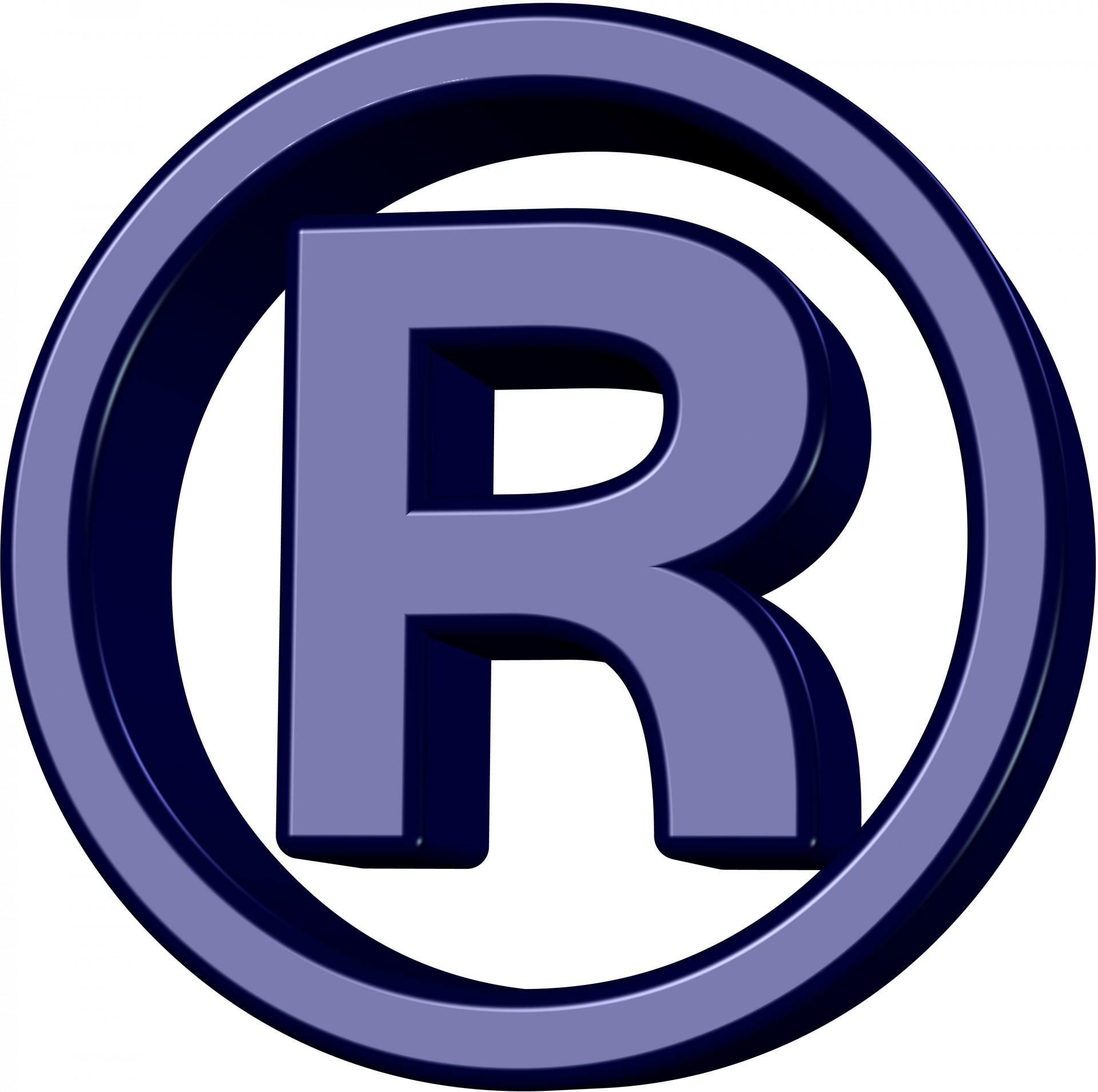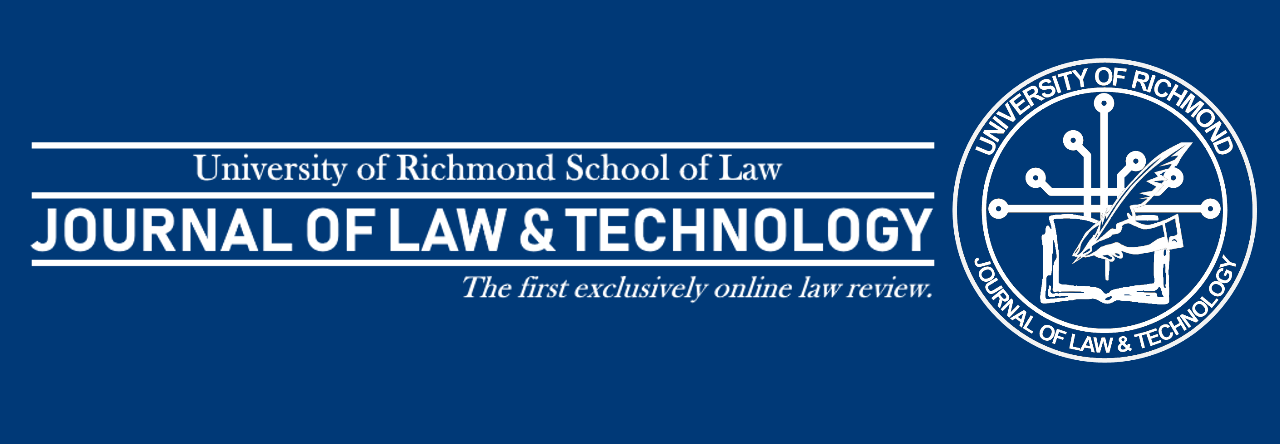By: Joey Rugari

Image Source: https://www.publicdomainpictures.net/en/view-image.php?image=103151&picture=3d-r-symbol
The New Electronic Filing Trademark Rules Are Starting to Apply
“I want to get a trademark in the US.” Until recently, such a statement didn’t require too much effort – one could file with the United States Patent and Trademark Office (USPTO) easily without much fuss, no matter where you were from.[1] Then, on August 3, a new rule from the USPTO went into effect that requires foreign-domiciled trademark applicants to register their mark through a local attorney.[2] Such a system change shouldn’t necessarily come as a shock to the trademark world in intellectual property, as this particular change more or less puts the United States in line with other countries’ trademark application processes.[3] This is hardly the first time, even in recent memory, that the United States has sought to take its intellectual property systems and bring them into the fold with the rest of the world.[4]
These efforts being taken by the USPTO appear to be part of a broad effort to technologize the trademark filing and application system, regarding the use of the USPTO’s own website as a repository tool.[5] It becomes even clearer that the USPTO has been taking steps to implement its new system with the changes to the way the Trademark Electronic Application System (TEAS) operates.[6] The new system requires the person seeking to file application forms to “log in to a USPTO.gov account with a two-step authentication . . . to better track filing activity and reduce misuse of [the] electronic filing system.”[7]
On top of the changes to filing, the USPTO has taken steps, and is currently taking steps, to build and properly implement a full and sophisticated specimen database to allow for mark-searching in both the context of word marks and image marks.[8] This push is in light of the use of AI-powered image recognition software that appears to be taking the principles of recognition technology and applying it to specimen recognition.[9] This is of particular importance for determining whether an image mark is being followed, since, naturally, it’s harder to make a search engine that can easily and readily find an image without some kind of tag.
What Issues Seem to Be Driving These Changes?
The modern era is full of more and more electronic issues regarding trademarks.[10] One particular example of note is how to handle electronic infringement of trademarks.[11] Anyone anywhere in the world can easily set up advertising online and without much time or effort use someone else’s trademark to sell their goods in a stream of commercial commence. This issue was answered by the European Union’s Court of Justice as a matter of holding the “act of infringement,” when understood as advertising or directing offers for sale, to have been committed in the territory where the goods or services had been made available for consumption.[12]
The general technologization of the world is driving the updating of systems and harmonizing with other existing frameworks. It’s also worth considering the issue facing trademark applications, in the context of the AI image search, in light of the concerns facing the limited number of available word marks (that are worth having).[13] As it gets harder and harder to effectively get a word-mark for a business, it seems likely that image marks become more and more important. Since they’re going to be important, it’s also going to be important to be able to implement solutions that actually address the issue of image searching in an elegant and useful way.
But what about the problem of suspicious foreign marks? Arguably, the issue of suspicious foreign marks, with a rising number of them having been filed in recent years,[14] also ties directly into the need to have a proper updated system for search for existing marks. The logic connecting the issues is fairly simple: (1) There’s an issue with the number of word-marks worth using depleting. (2) Suspicious foreign marks are an abuse of the USPTO’s trademark system; therefore (3) we should implement technological and legal solutions that limit that abuse.[15] It just so happens that the system, as it updates, can double-dip by reducing foreign abuse of the system while improving its functionality for legitimate users and can try to start addressing the issue of search for image marks in the instance that word marks become less popular to trademark.
[1] See Andrei Iancu & Mary Denison, New U.S. Counsel Rule: USPTO’s Initiatives to Ensure Accuracy and Integrity of the Trademark Register, U. S. Patent & Trademark Office (Jul. 30, 2019), https://www.uspto.gov/about-us/news-updates/op-ed-new-us-counsel-rule-usptos-initiatives-ensure-accuracy-and-integrity.
[2] As in an attorney from the United States.
[3] See Iancu, supra note 1.
[4] In 2011, the America Invents Act brought the United States’ patent filing system into line with the rest of the world, shifting from a “first-to-invent” to “first-to-file” system, implemented as of March 2013. See John Villasenor, March 16, 2013: The United States Transitions to a ‘First-Inventor-To-File’ Patent System, Forbes (Mar. 11, 2013, 11:54 PM), https://www.forbes.com/sites/johnvillasenor/2013/03/11/march-16-2013-america-transitions-to-a-first-inventor-to-file-patent-system/.
[5] See Iancu, supra note 1.
[6] See U. S. Patent & Trademark Office, TEAS Login Requirement (Sept. 23, 2019), https://www.uspto.gov/about-us/news-updates/teas-login-requirement.
[7] See id.
[8] See Iancu, supra note 1.
[9] See CompuMark, Technology Has Revolutionized Trademark Research and It Will Never be the Same (Jan. 24, 2019) https://www.compumark.com/blog/technology-has-revolutionized-trademark-research-and-it-will-never-be-the-same/.
[10] See, e.g., id.
[11] See Giuliana Beneduci, CJEU Provides Clarifications on Jurisdiction for On-line EU Trademark Infringement, Lexology (Sept. 13, 2019), https://www.lexology.com/library/detail.aspx?g=a20771ea-d958-446f-9f07-cc48572f0e75.
[12] See Case C-172/18, AMS Neve Ltd. et al. v. Heritage Audio SL et al., 2019 Curia (Sept. 5, 2019), https://curia.europa.eu/jcms/jcms/P_106308/en/.
[13] See Barton Beebe & Jeanne C. Fromer, Are We Running Out of Trademarks?: An Empirical Study of Trademark Depletion and Congestion, 131 Harv. L. Rev. 947, 998-999 (2018) (describing depletion of available word marks and concluding that they are being depleted regarding commonly chosen words).
[14] See Iancu supra note 1.
[15] And requiring a United States-based and licensed attorney is a great way to do so – it’s hard to imagine too many U.S. practitioners willing to put their licenses and livelihoods on the line for the sake of shady filing. And even if that’s not the case, it’s still a bottleneck, since there are significantly more foreign-born individuals in the world than there are U.S. licensed attorneys.
